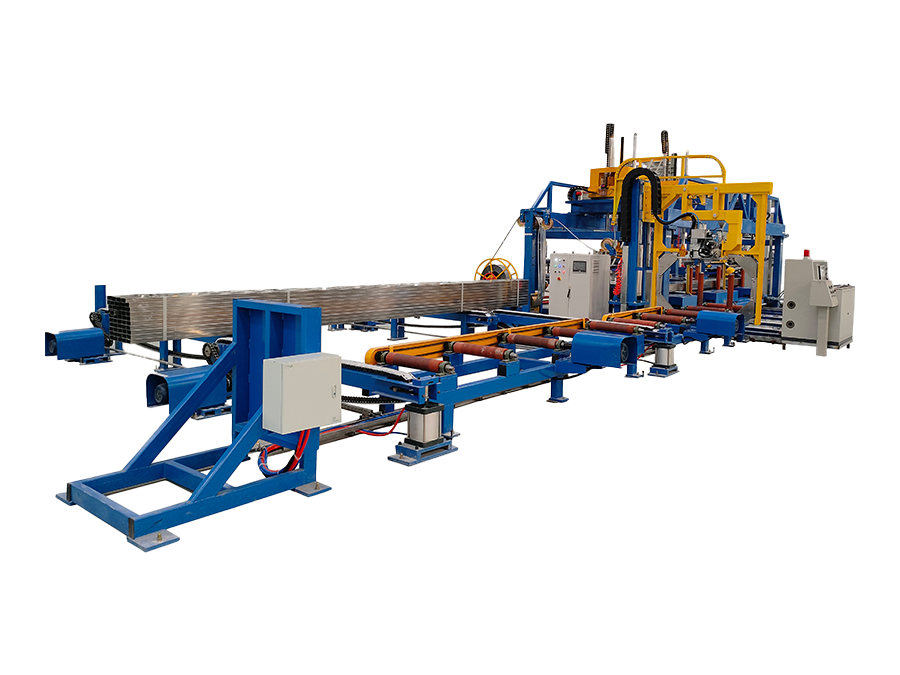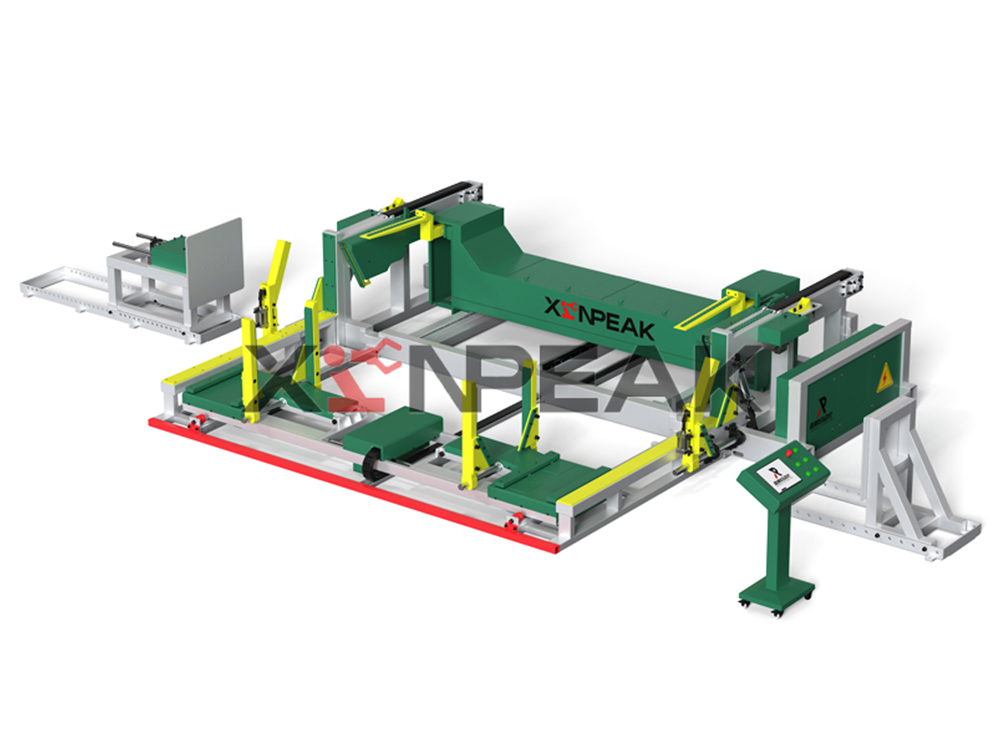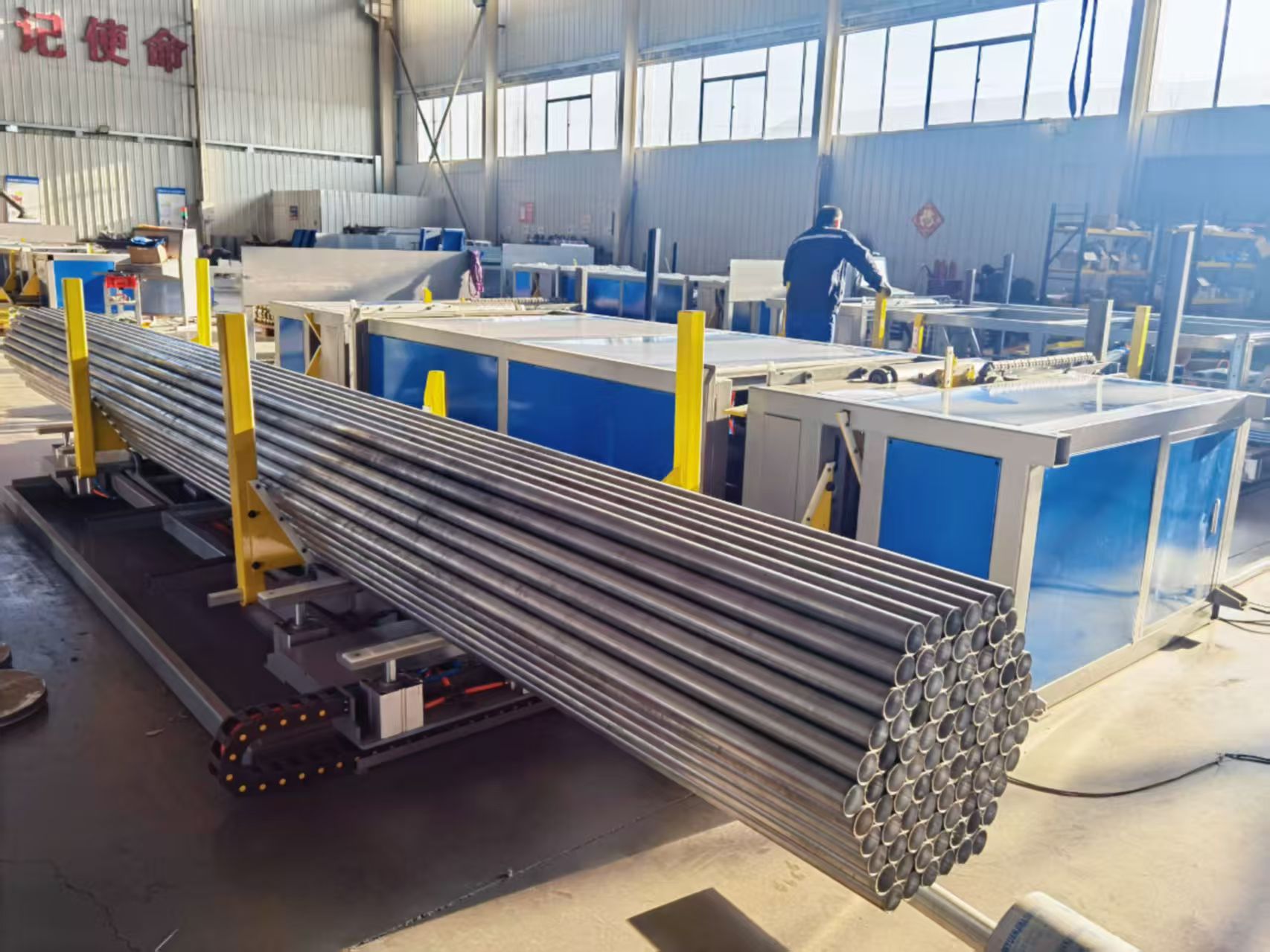Online
How to clean the visual sensor lens of steel pipe palletizer
2025-12-18
Cleaning the vision sensor lens of a steel pipe palletizer is a critical step in ensuring the equipment accurately identifies and locates steel pipes. Dust, oil, or scratches on the lens can reduce image clarity, leading to palletizing errors or failed grasping. The following are detailed cleaning steps and precautions:
I. Pre-Cleaning Preparation
1. Shutdown and Power Off
Turn off the power to the steel pipe palletizer and hang a "Do Not Close" warning sign to prevent safety accidents caused by improper operation.
If the sensor is integrated into a robotic arm or moving component, ensure it is stationary to avoid collisions during cleaning.
2. Protective Measures
Wear an anti-static wrist strap to prevent static electricity from damaging the sensor's electronic components.
Prepare dust-free cleaning tools to avoid introducing new contaminants.
3. Tools and Materials
Cleaning Tools:
Specialized lens tissue (such as Zeiss lens tissue) or microfiber cloth (avoid using ordinary paper towels or cotton cloths, as they can leave fibers and scratch the lens).
Compressed air can (for removing large dust particles; choose oil-free, water-free, industrial-grade air). Lens cleaning pen (with a carbon brush and cleaning tip, suitable for stubborn stains).
Cleaning agent:
Isopropyl alcohol (IPA, concentration ≥ 99%) or specialized optical cleaner (avoid using solutions with too low an alcohol content, as they may leave residual water stains).
Distilled water (for diluting the cleaner or for final rinsing).
II. Cleaning Steps
1. Initial Dust Removal
Method 1: Blowing with Compressed Air
Hold the can of compressed air 20-30 cm from the lens surface and blow at a 45° angle. Avoid direct vertical spray (which may press dust into the lens surface).
Focus on cleaning dust around the edges and crevices of the lens, as these areas are prone to dirt accumulation and difficult to wipe.
Method 2: Gently Brush with a Soft Brush
If the dust is light, use the carbon brush of the lens cleaning pen to gently sweep away particles. The bristles must be dry and free of grease. 2. Deep Cleaning
Step 1: Apply Cleaner
Place a drop of isopropyl alcohol or optical cleaner on the center of the lens tissue (do not spray directly on the lens to prevent the liquid from seeping into the sensor).
Apply just enough to moisten the lens tissue without dripping, and avoid running the liquid into the edges of the lens.
Step 2: Spiral Wipe
Fold the lens tissue into a triangle, touch the tip to the lens surface, and wipe in a clockwise or counterclockwise spiral motion, moving from the center outward.
Apply light, even pressure (about the same as a light finger press) while wiping, avoiding excessive pressure that may cause scratches.
Step 3: Dealing with Stubborn Stains
If grease or fingerprints remain, repeat steps 1 and 2, or use the cleaning tip of a lens cleaning pen (make sure the cleaning tip is not contaminated).
For stubborn stains, soak the lens tissue in isopropyl alcohol, apply it briefly (no more than 5 seconds), and then gently wipe. 3. Final Inspection and Drying
Checking Cleaning Results
Using lens tissue or a microfiber cloth, inspect the lens surface for any remaining water spots, fibers, or stains in a well-lit environment (e.g., using a flashlight at an angle).
If any residue is found, reclean until the surface is completely clean.
Allow the sensor to dry naturally.
Avoid using a heat gun or hair dryer to accelerate drying, as high temperatures may damage the lens coating.
Place the sensor in a dust-free environment for 10-15 minutes to allow the cleaner to evaporate naturally.
III. Post-Cleaning Testing and Calibration
1. Functional Test
Restart the steel pipe palletizer, run the vision recognition program, and check whether image clarity has been restored.
Observe the palletizing positioning accuracy. If significant deviations persist, the lens may not have been thoroughly cleaned or the sensor parameters may need to be recalibrated.
2. Parameter Calibration (If Necessary)
If image quality improves significantly after cleaning but positioning errors persist, recalibrate the vision sensor parameters (such as focal length, exposure time, and white balance) using the device control panel or host computer. Refer to the calibration procedures in the device manual. Alignment usually requires using a standard calibration plate or a specific pattern.
IV. Precautions and Taboos
1. Prohibited Behaviors
❌ Do not touch the lens surface directly with your fingers (fingerprints and oil stains are difficult to completely remove).
❌ Do not use cleaners containing ammonia, acetone, or abrasives (they can corrode the lens coating).
❌ Do not wipe the dry lens directly with a dry cloth or paper towel (they can easily scratch the surface).
❌ Do not move or vibrate the sensor during cleaning (this may cause internal components to shift).
2. Frequency Recommendations
Daily Cleaning: Blow away dust from the lens surface with compressed air at the end of each shift.
Deep Cleaning: Perform a thorough cleaning weekly or biweekly (depending on ambient dust levels).
Special Circumstances: Immediate cleaning is required if an oil spill occurs in the workshop or the sensor is exposed to humidity.
3. Environmental Requirements
Cleaning should be performed in a dust-free room or on a clean bench to prevent secondary contamination of the lens by airborne particles. If on-site cleaning is necessary, use a dust cover to shield the area around the sensor to reduce dust ingress.
V. Case Studies and Lessons Learned
Case 1: A company's failure to regularly clean a vision sensor resulted in a palletizing deviation rate rising from 0.5% to 3%. After deep cleaning, the deviation rate returned to 0.2%.
Case 2: An operator mistakenly used an alcohol pad to wipe the lens, causing the coating to peel off. The entire sensor module ultimately required replacement (costing approximately 5,000 yuan).
Lesson Learned: Create a cleaning record sheet, noting the time, tools, and results of each cleaning to facilitate tracking of equipment status and optimize maintenance plans.
Contact Us
You can contact us through the following four methods. We will reply to your inquiry within 2-8 hours after receiving it!
Call Us
Send Email
Leave a Message
Add WeChat or WhatsApp







